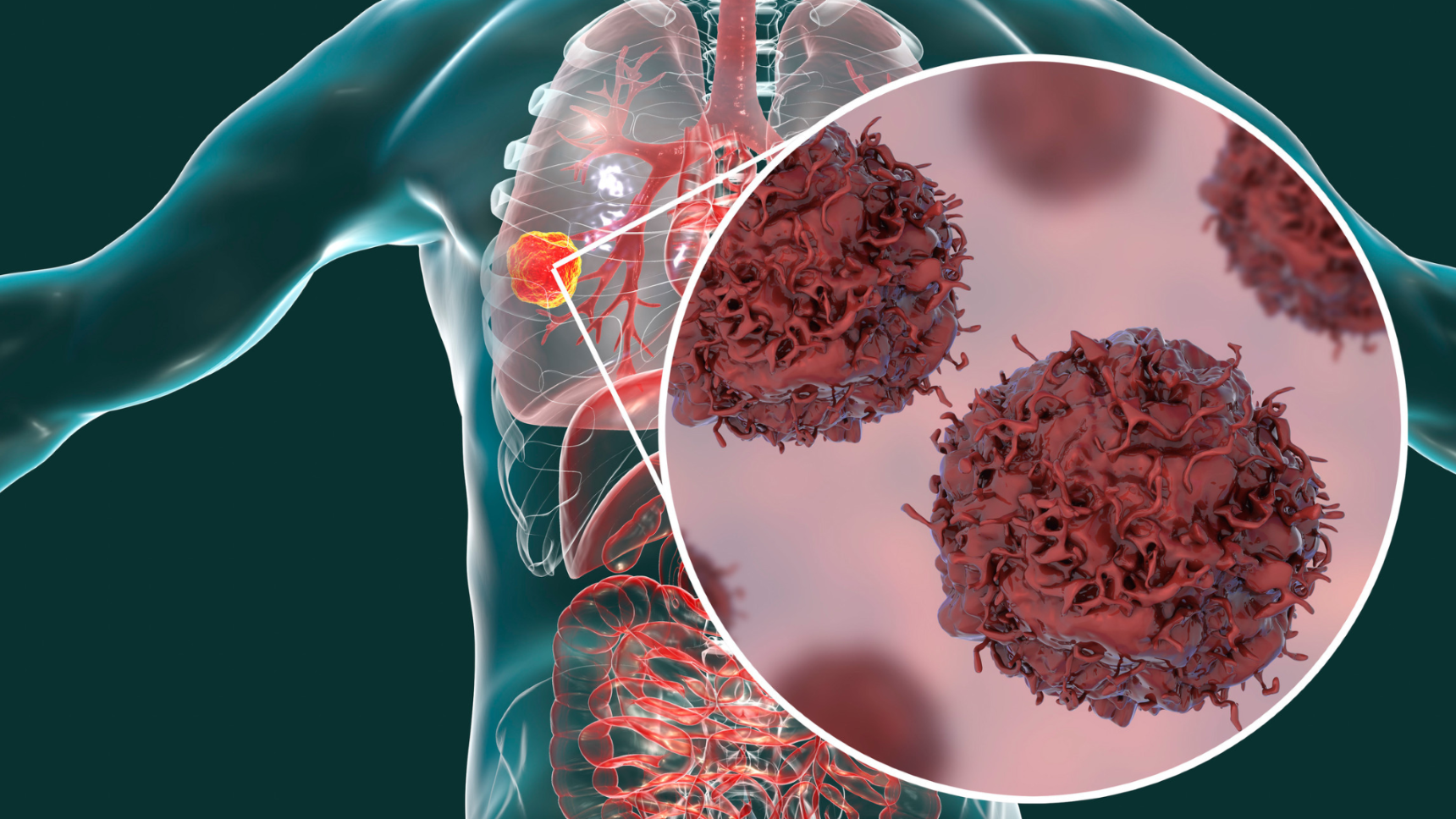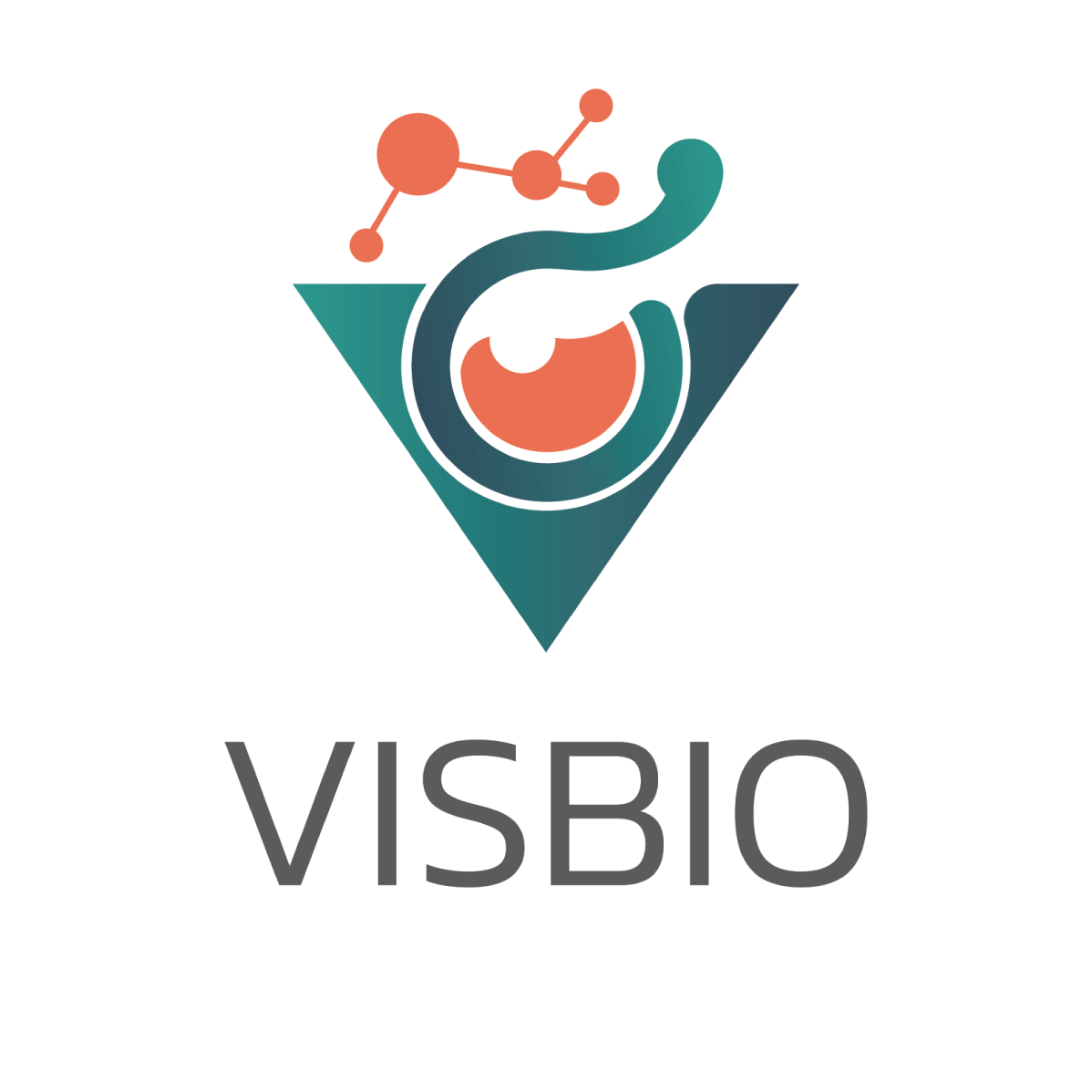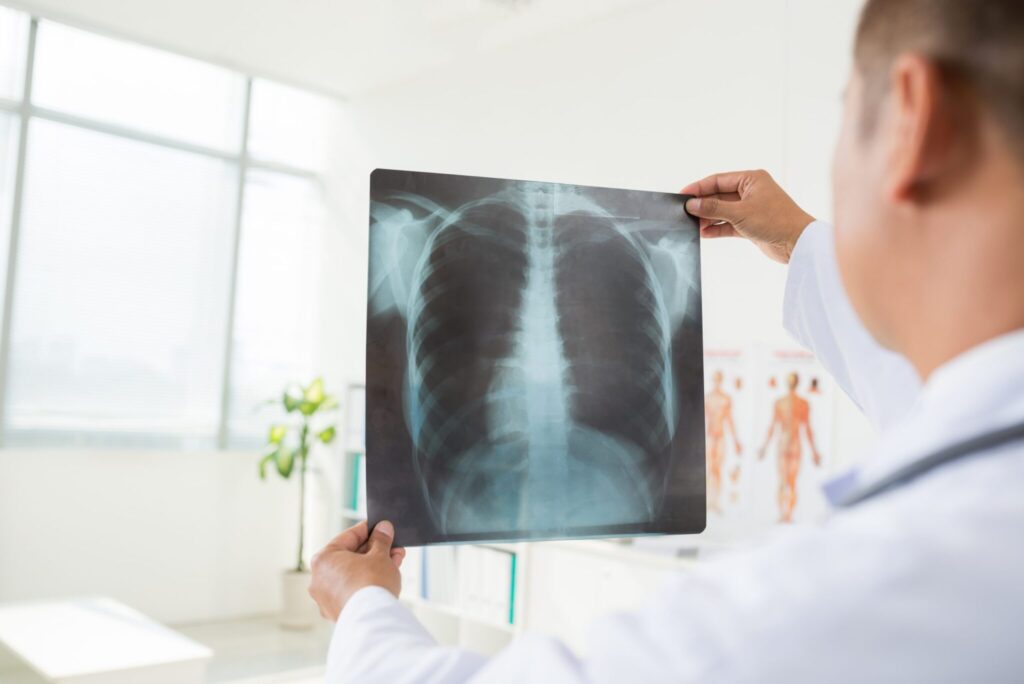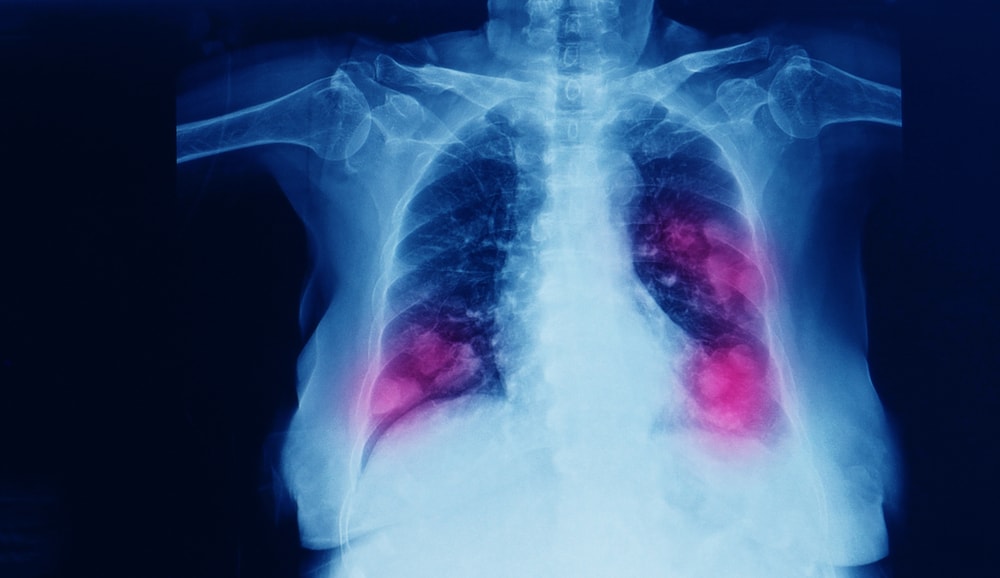
Information on Lung Cancer of Adenocarcinoma Type Double Mutant Inhibition Activity Testing Service
VISBIO Co., Ltd. offers testing and analysis services for the inhibition efficiency of Adenocarcinoma type double mutant non-small cell lung cancer at the laboratory. Our team of scientific experts conducts tests by culturing cancer cells under 2D cell culture conditions. This testing is suitable for in-depth research with the objective of developing herbal remedies capable of inhibiting cancer cells.
Lung cancer is the most prevalent and fatal cancer worldwide. According to the public health statistics of 2019, lung cancer ranks as the 3rd most common cancer in Thai males and the 4th most common in Thai females. The World Health Organization (WHO) classifies lung cancer into two groups based on histopathological and disease prognosis, which are small cell lung cancer (SCLC) and non-small cell lung cancer (NSCLC). Non-small cell lung cancer accounts for up to 80-85% of all lung cancers. Currently, there are developments in herbal products, herbal extracts, dietary supplements, or medicines for nourishing and combating lung inflammation. These products can be tested at the cellular level regarding their toxicity to cancer cells, inhibitory properties, or the appropriate concentration for inhibiting Adenocarcinoma Non-Small Cell Lung Cancer, double mutant type (NCI-H1975).
Get to Know Lung Cancer
Lung cancer is the most common and deadliest cancer globally. According to public health statistics in 2019 by the Ministry of Public Health in Thailand, it was reported that 40 people died from lung cancer every day, totaling 14,586 deaths per year. Data from the National Cancer Institute in 2021 also revealed that lung cancer ranks as the 3rd most common cancer in Thai males and the 4th most common in Thai females. The World Health Organization (WHO) classifies lung cancer into two major groups based on histopathological and disease prognosis, which are small cell lung cancer (SCLC) and non-small cell lung cancer (NSCLC).
Non-small cell lung cancer, which accounts for up to 80-85% of all lung cancer cases, further divides into various subtypes, including squamous cell carcinoma, the most frequent subtype, and non-squamous carcinoma. Non-squamous carcinoma has additional subtypes such as Adenocarcinoma, Large cell carcinoma, and Adenosquamous cell carcinoma. Among these, Adenocarcinoma is the most common subtype, making up approximately 40% of all lung cancer cases, even among individuals who have never smoked. There is a growing trend, especially among females, with this type of lung cancer typically found in the mucus-producing glands of the lungs or bronchial tubes.
Lung Cancer Risk Factors
The risk factors for lung cancer include:
- Smoking or exposure to cigarette smoke, which is a major cause of lung cancer, accounting for up to 80-90% of cases. Cigarette smoke contains several carcinogenic substances such as nitrosamines benzo(a)pyrene and diol epoxide. Those who smoke cigarettes are at a significantly higher risk of developing lung cancer compared to non-smokers, with heavy smokers having a risk over ten times greater. People who live with regular smokers also face a higher risk, at least twice as likely, to develop lung cancer. Smoking has been found to be associated with the development of squamous cell lung cancer and small cell lung cancer, whereas adenocarcinoma is less strongly linked to smoking. Smoking contributes to approximately 80% of male lung cancer deaths and 75% of female lung cancer deaths. Moreover, non-smokers exposed to secondhand smoke frequently or secondary smokers have a higher lung cancer risk compared to those unexposed to smoke.
- Exposure to carcinogenic chemicals such as asbestos, diesel fumes, and radon gas increases the risk of developing lung cancer significantly, up to five times more than the general population.
- History of lung diseases like tuberculosis or emphysema may elevate the risk of lung cancer.
- Family history of cancer can increase one’s susceptibility to lung cancer.
- Air pollution, particularly fine particulate matter (PM2.5), in the atmosphere is another contributing factor to lung cancer.
Adenocarcinoma; Non-small cell lung cancer type of double mutant (NCI-H1975)
The NCI-H1975 double mutant lung cancer cells, a type of Adenocarcinoma and Non-small cell lung cancer, are commonly used as a model for studying lung cancer and developing anti-lung cancer drugs. Researchers investigate their efficacy in inhibiting lung cancer cell growth outside the cells or within microplates (Well Plate) under two or three-dimensional conditions (2D or 3D Cell Culture – Anti-cancer) in cell culture media.
Testing Method for Adenocarcinoma; Non-small Cell Lung Cancer type of Double Mutant (NCI-H1975) Cultivated Cancer Cells (Cell Culture - Anti-cancer)
Currently, there is a development of herbal products, herbal extracts, dietary supplements, or medications to be used for the nourishment or anti-inflammation of the lungs. These products can be tested for their effectiveness on the cellular, including their toxicity to cancer cells, inhibitory properties, or suitable concentration for inhibiting Adenocarcinoma; Non-small Cell Lung Cancer double mutant lung cancer cells (NCI-H1975).
The testing process involves taking cells or tissues obtained directly from living organisms and cultivating them under controlled conditions to allow cancer cells to grow, proliferate, or increase in number. This closely resembles cancer cells grown in laboratory animals or in a patient’s body. Studying cell-level behavior is an initial test before conducting further analysis in animal experiments or subsequent clinical trials.
Figure: demonstrating an example of two cell culture in-vitro setting used for studying cell biology and cancer research (adapted from Gaebler et al., 2017)
Lung Cancer of Adenocarcinoma Type Double Mutant Inhibition Activity Testing by MTT assay
The inhibition efficacy of Adenocarcinoma; Non-small Cell Lung Cancer type of double mutant (NCI-H1975) lung cancer cells, cultivated on the cellular or in well plate, is tested using the Methyl Tetrazolium 3-[4,5-Dimethylthiazol-2-yl]-2,5-diphenyltetrazolium bromide (MTT) assay. The MTT assay is a method used to test the inhibition efficacy of cancer cells in a microplate based on the enzymatic activity of dehydrogenases within mitochondria. The yellow dye of MTT (3-[4,5-Dimethylthiazol-2-yl]-2,5-Diphenyltetrazolium Bromide) is converted into a purple formazan compound.
Consequently, formazan is used to indicate cell viability. Dead cancer cells will appear colorless, while living cancer cells will exhibit purple formazan within the cells. When dissolved in a solvent like DMSO, it produces a blue-violet solution that can be measured for light absorption using a spectrophotometer, and this measurement directly correlates with the proportion of living cells. Subsequently, the data is used to calculate the percentage of cancer cell inhibition or the concentration of the substance that inhibits 50% of cancer cell growth (IC50).
Literature:
- ทะเบียนมะเร็งระดับโรงพยาบาล, สถาบันมะเร็งแห่งชาติ กรมการแพทย์ กระทรวงสาธารณสุข, พ.ศ.2564
- มะเร็งปอด ทุกระยะดูแลได้, โรงพยาบาลศิริราช ปิยะมหาราชการุณย์
- โรคมะเร็งปอด, คณะแพทยศาสตร์โรงพยาบาลรามาธิบดี มหาวิทยาลัยมหิดล ศูนย์ความเป็นเลิศด้านโรคมะเร็ง
- ข้อมูลสถิติสาธารณสุข, กองยุทธศาสตร์และแผนงาน สำนักงานปลัดกระทรวงสาธารณสุข, 2562
- Travis WD, Brambilla E, Nicholson AG, et al. The 2015 World Health Organization Classification of Lung Tumors: Impact of genetic, clinical and radiologic advances since the 2004 classification. J Thorac Oncol 2015; 10: 1243-1260.
- Gaebler M, Silvestri A, Haybaeck J, Reichardt P, Lowery CD, Stancato LF, et al. Three-dimensional patient-derived In vitro sarcoma models: promising tools for improving clinical tumor management. Front Oncol 2017; 7: 203.





